Over the course of many centuries marked by social and political changes, Korean cuisine has undergone transformations. Its origins can be traced back to the ancient farming and nomadic cultures of Korea and southern Manchuria. It reflects the complex interactions between the natural environment and cultural trends.
The main ingredients of Korean food are rice, vegetables, seafood, and meat. Traditional Korean food doesn’t have a lot of dairy products. Instead, its meals consist of steamed short-grain rice and side dishes, which give the traditional Korean food its name. Almost every meal includes kimchi, a popular side dish. In addition, a variety of ingredients are commonly used in Korean cooking, such as sesame oil, donjang (fermented bean paste), soy sauce, salt, garlic, ginger, gochugaru (chili flakes), gochujang (fermented red chili paste), and napa cabbage. It’s worth noting that each province has its ingredients and meals. Korean culture has strict rules about how to treat food, reflecting the importance of respectful food treatment.
Chuncheon Dakgalbi (Spicy Stir Fried Chicken)

Bibimbap (Rice Bowl)
Bibimbap is a fun and healthy dish that means “mixed rice.” It is made with vegetables, rice, chili paste, and a fried egg. Firstly, take all of the ingredients and mix them by hand. Then add as much gochujang (chili paste) as you can handle. Cold Bibimbap is heated in a metal or a hot stone bowl. On the hot stone, the egg and rice stick together and cook. If you go to Jeonju, you should definitely try their version of bibimbap called Jeonju-bibimbap.
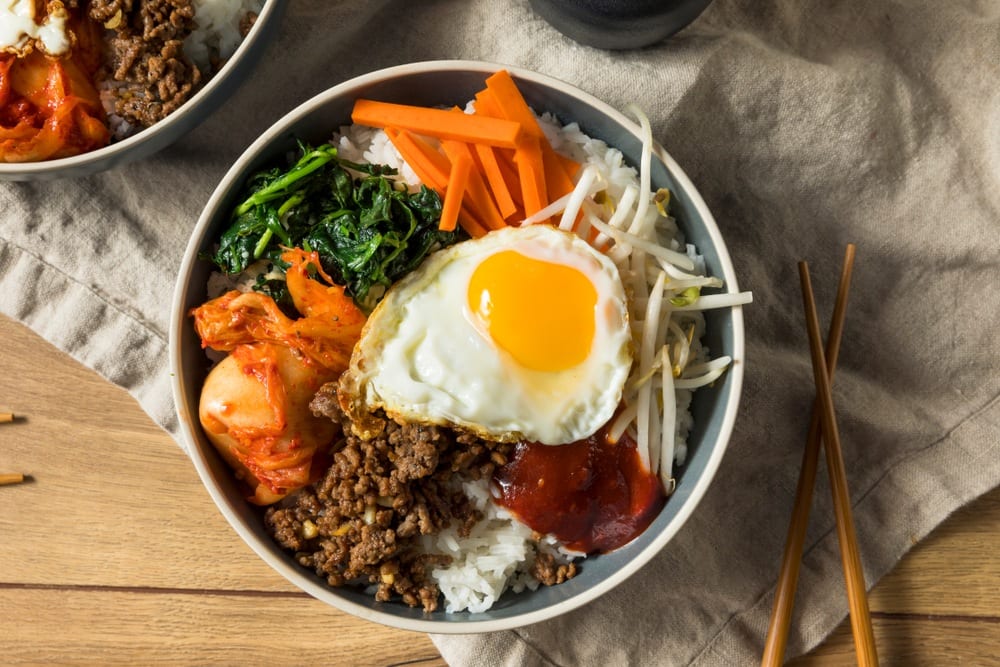
Samgyeopsal (Korean BBQ)
Samgyeopsal is a Korean grilling style. If you are not vegetarian and like pork, you must try Samgyeopsal. The dish includes thick slices of pork grilled without being previously marinated at the table. The strips are then dipped in a sesame oil-based seasoning and wrapped in lettuce with a garlic and onion strip. It’s a well-known Korean dish.
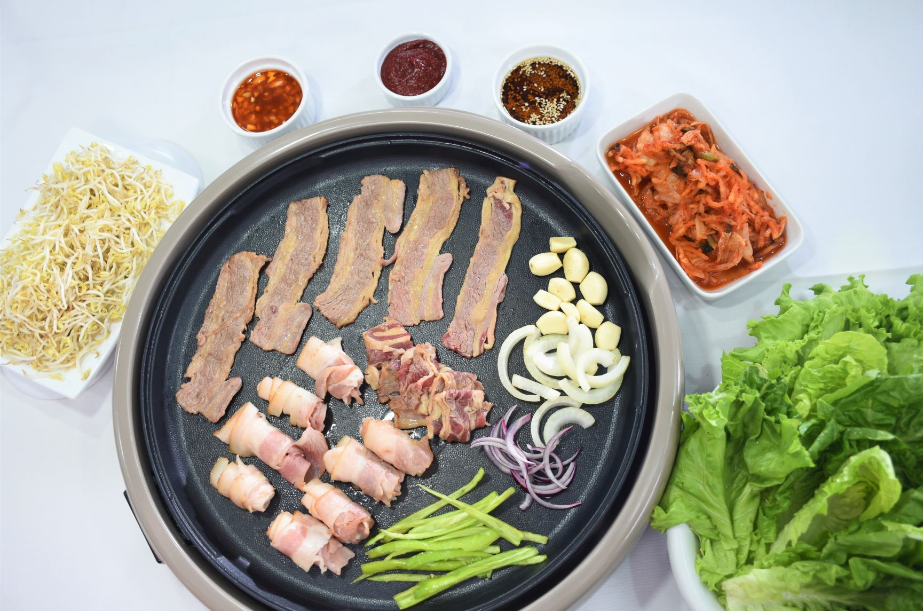
Kimchi (Spicy Fermented Vegetables)
When we think of Korean food, the first thing that comes to mind is kimchi. It’s the best way to try Korean food for the first time. It is a spicy, crunchy salad made with fermented vegetables, especially cabbage. It has a lot of fiber and nutrients but only a few calories. With this tasty side dish, a Korean meal is complete.
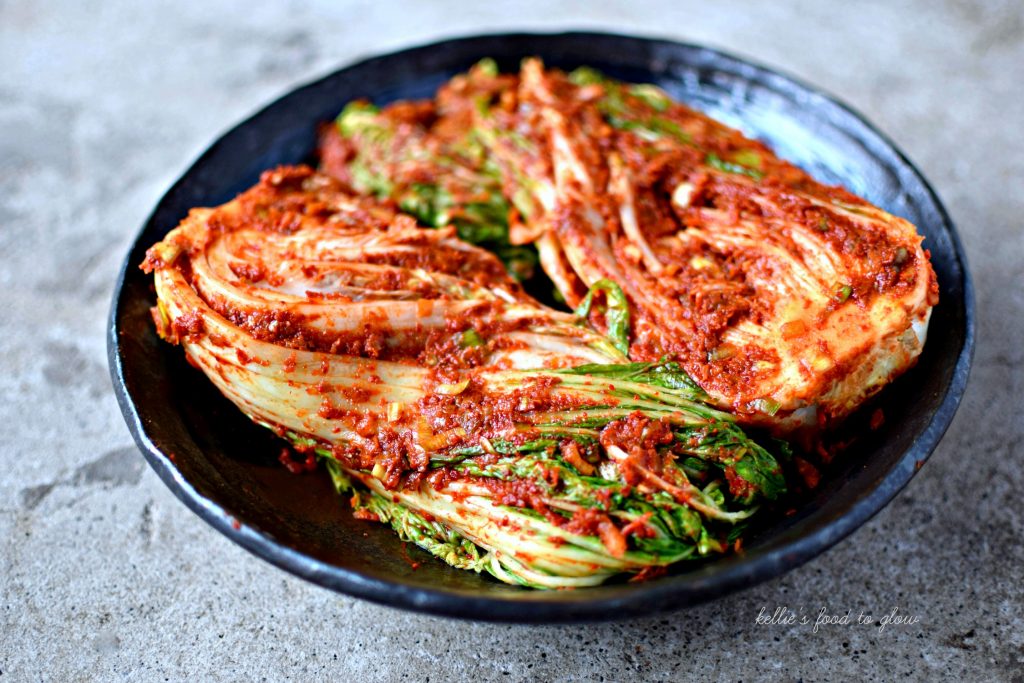
Japchae (Stir-Fried Glass Noodles)
Japchae is a popular Korean dish with glass noodles, beef, mushrooms, other vegetables, and sesame oil. They use sweet potatoes to make these clear, thin noodles. In contrast to other Asian noodle dishes, such as soup, Koreans eat these tasty noodles with a spoon and metal chopsticks.

Haemul Pajeon (Seafood Vegetable Pancake)
If you like seafood, you should put Haemul Pajeon on your list. The outside of these pancakes is crispy. They are made with a batter of rice, eggs, and green onions. In fact, oysters, prawns, and squid are all common types of seafood. You can eat this tasty pancake with Korean rice wine makjoli.
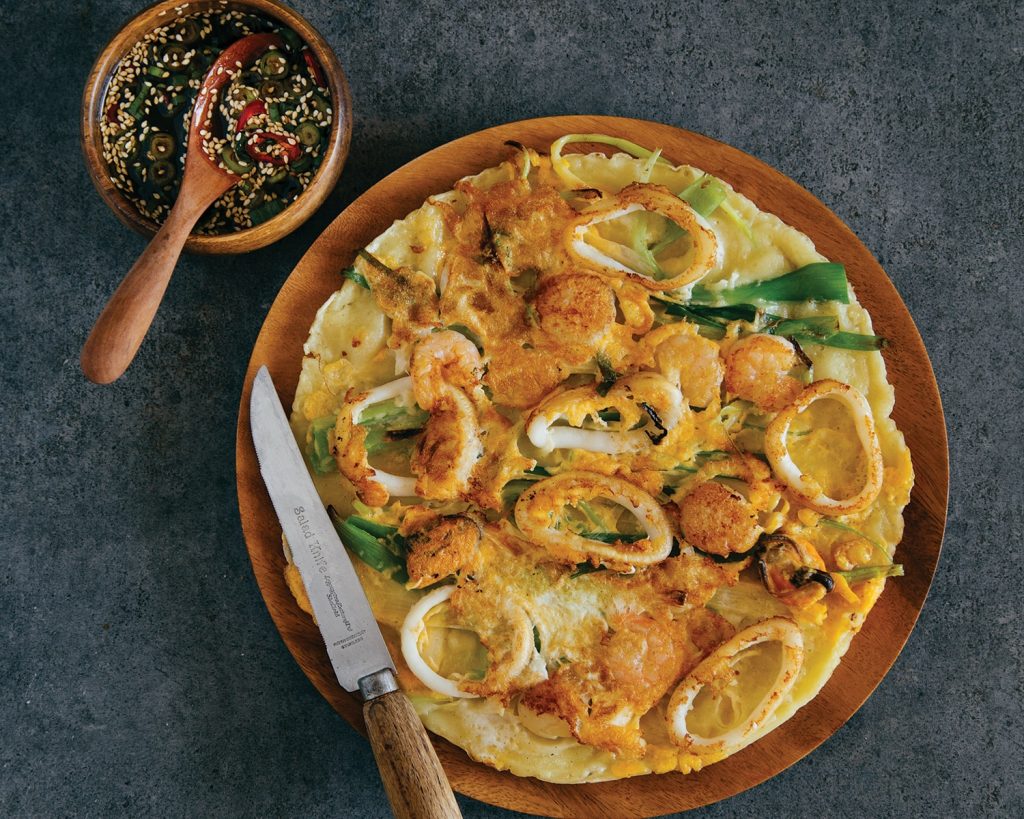
Tteokbokki (Spicy Red Rice Cake)
Tteokbokki is a popular Korean street food in Seoul. It includes fish cakes and rice cakes that are sweet and chewy. A special chili and soybean paste sauce is mixed with steamed rice cakes, fish cakes, and scallions. If you like hot and spicy tastes, without a doubt, try savory street food.
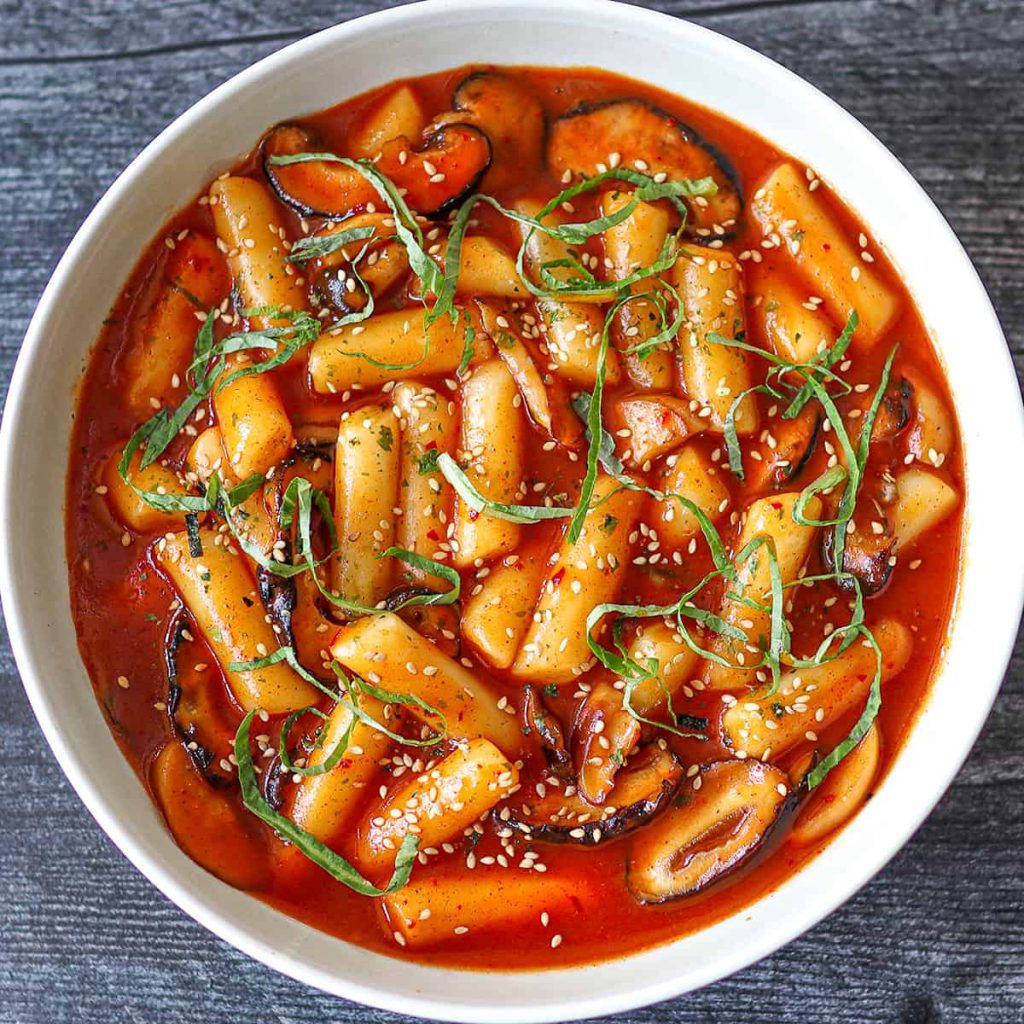
Soy Sauce Crab
Koreans need to get enough of ganjang gejang, crabs pickled in soy sauce. It tastes sharp and bitter; you eat it cold. If you like to try new foods, this dish is for you. Its taste will surprise people who have never had it before.

Bulgogi
Bulgogi is made of thin slices of beef sirloin marinated and cooked over a charcoal hob with sliced onions, green chilies, and garlic. This gives the dish a distinct smoky flavor. Before grilling, the meat is marinated for 2 to 4 hours in a mixture of soy sauce, sesame oil, black pepper, garlic, onion, ginger, and sugar. This makes the meat taste better and makes it more tender. You eat it with green vegetables, like lettuce and spinach. You use them to wrap a piece of cooked meat.

Ginseng chicken soup (samgyetang)
Locals believe the body needs more energy in the summer, so they often drink hot samjitang (chicken ginseng soup) between June and early September. Small spring chickens are stuffed with chestnuts, garlic, dried jujubes, ginseng, glutinous rice, and ginko nuts to make this healthy soup. Slowly cooking the ingredients makes the meat tender and gives the thick broth a slightly bitter but fragrant flavor.
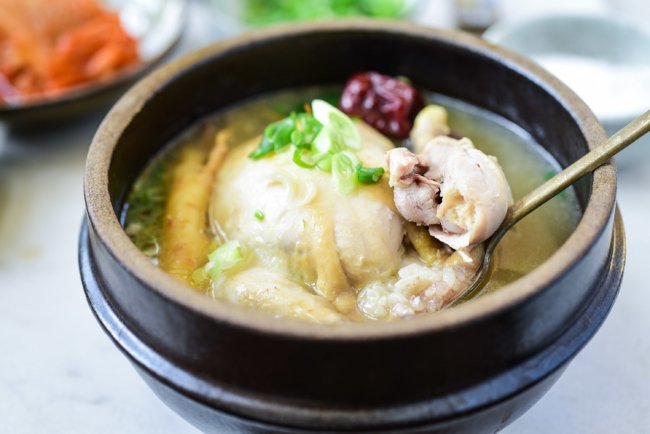
Korean fried chicken
No trip to South Korea is complete without trying the country’s famous fried chicken. Double-frying them results in a crispy and crunchy texture that’s simply irresistible. Whether you prefer spicy or sweet, there’s a flavor for every plate, making it the perfect snack or meal during your travels.
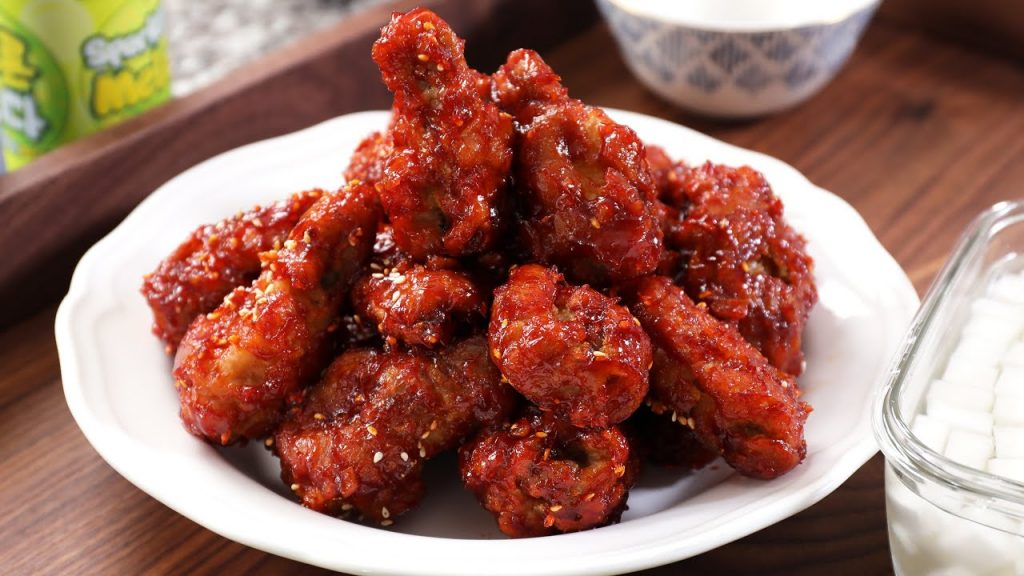
Kimbap/Gimbap (Korean-Style Sushi)
Gimbap or Kimbap is a popular Korean street food similar to sushi rolls which you can eat on the go. This Korean food recipe is wrapped in a seaweed roll with sushi rice, meat, spinach, and stir-fried vegetables. The roll is then cut into small rounds and served with kimchi as a side dish.

Korean stew (jjigae)
In Seoul, there are different kinds of jjigae. But this Korean stew usually has meat, seafood, or vegetables in a broth flavored with hot pepper paste (gochujang), fermented miso (gaenjang), soybean paste, or salted fermented shrimp (saeujeot). Usually, jjigae is served between heavier dishes as a palate cleanser. It has the same consistency as a Western stew. In Seoul, budae jjigae is one of the most popular jjigae dishes. It includes bacon, sausage, spam meat, ramyeon noodles, and rice cakes mixed with gochujang paste for a spicy taste.
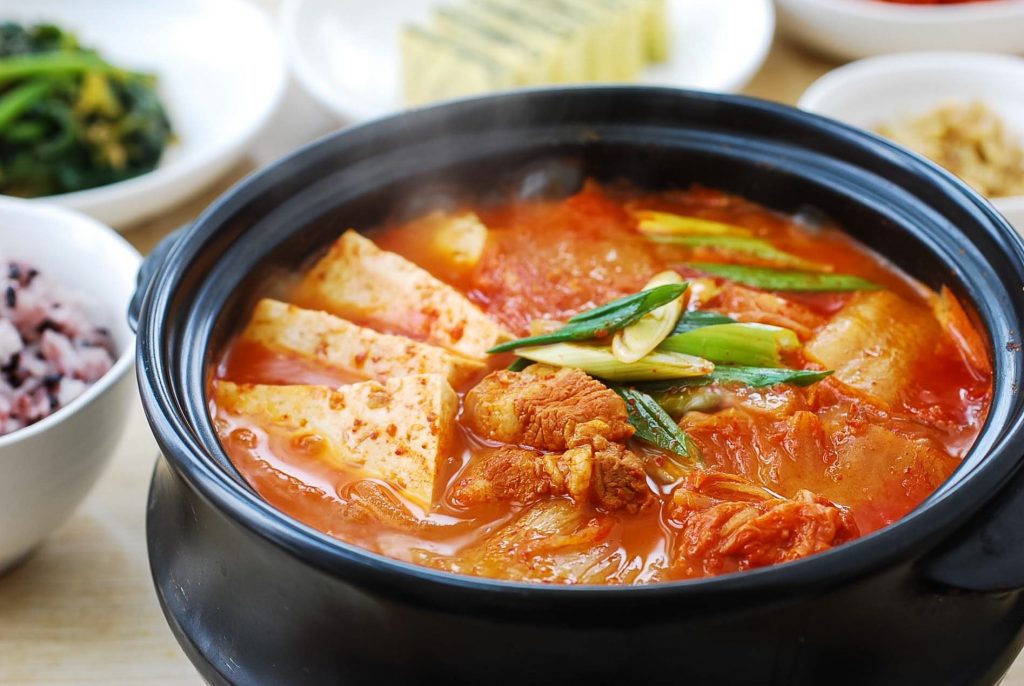
Spicy cold noodles (bibim nengmyun)
Bibim nengmyun is served in a stainless steel bowl with cold broth, julienned cucumber, slices of Korean pear, boiled egg, and cold-boiled beef slices. To make long, thin noodles, they use flour, buckwheat, or sweet potatoes. Traditionally, they eat whole noodles, but customers can ask servers to cut them into any size they want. Eating them whole is a sign of good health and long life.

Maeuntang (Spicy Fish Stew)
Maeuntang is a hot, spicy fish stew made with different kinds of fresh fish. How can you tell if the fish is still good? Most restaurants have an aquarium outside where you can pick out the fish you want to eat. Fresh fish is then cut up and boiled with some vegetables and ground beef. In a maeuntang bowl, you can find shellfish, garlic, and many other things. They give it an unforgettable taste and help make this one of Korea’s most loved seafood dishes.
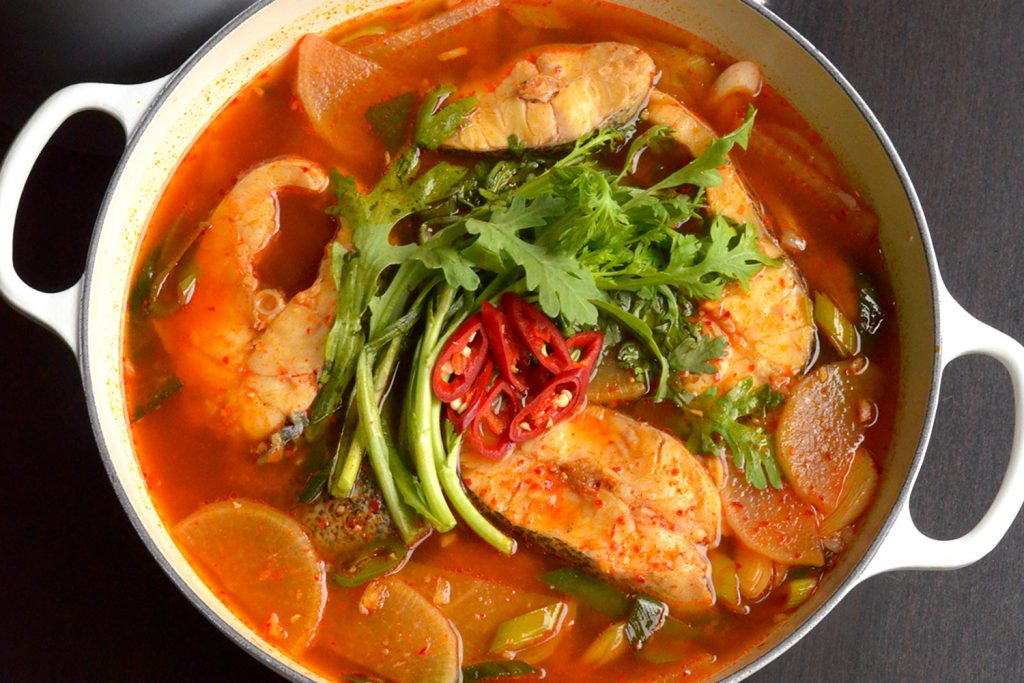
Sundae (Blood Sausage)
Sundaes are one of the oldest traditional dishes in Korea. They taste like a mix of haggis and black custard. It tastes amazing and is a great, cheap snack. Therefore, Sundaes have been a typical family meal in Korea for a long time. They include pig or cow intestines, rice, and vegetables. Dip the sundae in salt or another seasoning bowl and eat it. On a warm evening, it goes well with a cold beer.
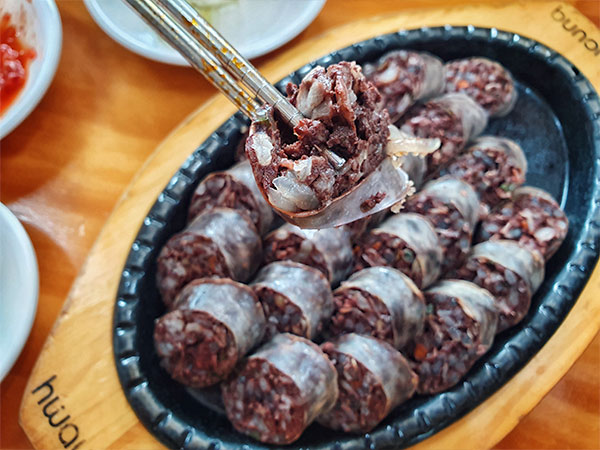
Conclusion
In summary, Korean food is a must for everyone looking for new food adventures. These flavor-packed foods are a delightful experience for your taste buds.
Learn more about delightful cuisine now!

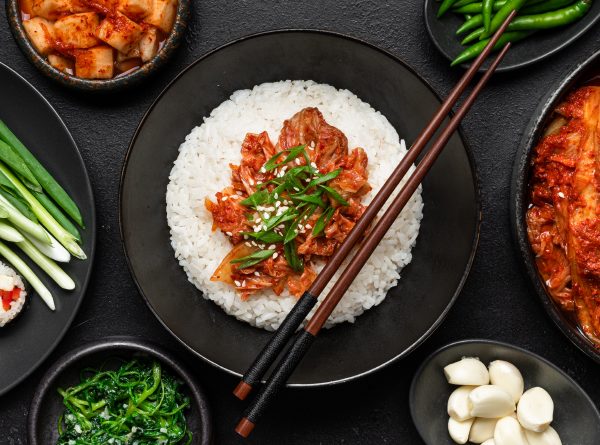
3 thoughts on “From BBQ to Bibimbap: Why Korean Food is Taking the Culinary World by Storm!”